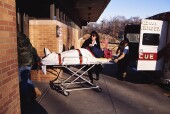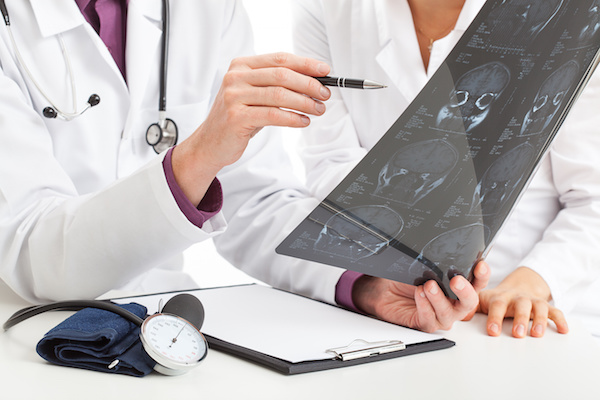
MONDAY, Nov. 11 (HealthDay News) — New research may help connect the dots between traumatic brain injury and the risk for memory and other brain-related problems later in life.
Brain imaging technology known as positron emission tomography (PET) shows that people who have had a traumatic brain injury develop so-called “plaques” in their brain like those seen in the brains of people with Alzheimer’s disease, the most common type of dementia.
“Our research has shown, for the first time, that PET imaging can show amyloid deposits in the brain after head injury,” said study author Dr. David Menon of the anesthesia division at the University of Cambridge, England. And these deposits can show up within hours of the blow to the head.
Previous studies have linked a history of head injury with higher odds of developing memory problems later in life, but it is too early to say that the head injury is the cause. “Patients can be imaged with PET to detect early amyloid deposition, and then followed up to see whether this early amyloid deposition resolves, whether it recurs, and how these processes relate to later cognitive [mental] decline,” Menon said.
For this study, researchers used PET imaging to look at the brains of 15 people with traumatic brain injury and 11 healthy individuals with no history of brain trauma. The images were taken between one day and close to a year after the head injury.
The researchers also examined brain tissue samples taken from people who died after head injury and those who died of non-brain-related causes. The findings are published in the Nov. 11 online edition of JAMA Neurology.
The greater the blow to the head, the more amyloid plaque accumulation and dementia risk was seen, Menon said. Individuals most at risk may include those who also have a genetic predisposition to Alzheimer’s disease, he said.
In recent years, former professional athletes who sustained head injuries and went on to develop such memory and mood problems have received a lot of media attention. But this study did not include athletes, just people with injuries severe enough to warrant admission to an intensive care unit. On average, they were in their 30s.
Other experts not involved with the study stress the significance of these findings.
“The study shows evidence of these plaques days after the accident,” said Dr. Mony de Leon, director of the Center for Brain Health at NYU Langone Medical Center in New York City. “It is not like someone got hit on the head at age 32 and can’t remember anything at age 60. The damage is immediate, and now we have a way of seeing it.”
He pointed out that amyloid plaques are a hallmark of Alzheimer’s disease in the brain, but they are not the only marker. Tangled or twisted strands of another protein are also seen in the brains of people with Alzheimer’s disease. “This study is highly suggestive that there is an Alzheimer’s disease-like effect in the brain after head injury, but it’s not definitive because we can’t see the tangles,” said de Leon.
Still, the potential at-risk group is huge, he said. It includes athletes, soldiers and individuals hurt in car crashes.
The study, while small, is important, said Dr. Robert Glatter, an emergency physician at Lenox Hill Hospital in New York City and a former sideline physician with the N.Y. Jets. “This type of imaging may potentially play a role in helping to understand how traumatic brain injury affects the brain and serve as a marker to evaluate such patients over the long term,” he said. If treatments are developed, this type of imaging will help determine whether or not they work.
Dr. Sam Gandy, director of the Mount Sinai Center for Cognitive Health in New York City, cautioned that the imaging research is still in the early stage. “There is currently great interest in identifying objective biomarkers [or indicators] to document the structural and functional [consequences] of chronic and mild traumatic brain injury,” Gandy said.
But PET scans have been used far less often in diagnosing sports-related brain damage than brain harm caused by traffic accidents, he noted.
More information
The U.S. Centers for Disease Control and Prevention has more about the risks associated with traumatic brain injury.
Copyright © 2025 HealthDay. All rights reserved.

